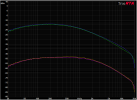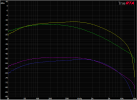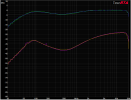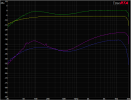unFILTERed
Power User
The day I fired up a drive model in one of those famous modelers I owned at the time, in front of my hand-wired AC15, was the day I also decided to get rid of it. Yes, I could get good sounds out of it, but nothing like in real-world settings or pedal-amp(Vox AC15HW) combinations.Spent an hour or so comparing a couple drive pedals. The comparisons are done at two excitation levels: high and low with low being 40dB lower. All knobs at noon.
Here we have the Axe-Fx vs. a Klon:
View attachment 130096
Blue and orange are the Klon.
And here we have another modeler vs. the Klon:
Traditionally, I never favored a Tube Screamer in front of a Vox-type amp, yet the modeler's TS surpassed other typical contenders/drive models when paired with my Vox.
I should also add, my experience is from 5 years ago, I don't know the current state of that modeler, maybe/hopefully it's more authentic these days.











